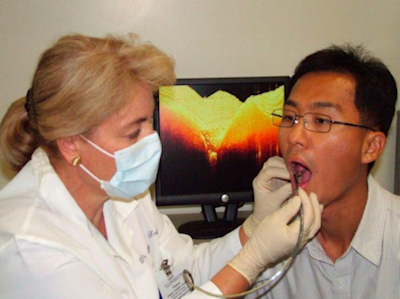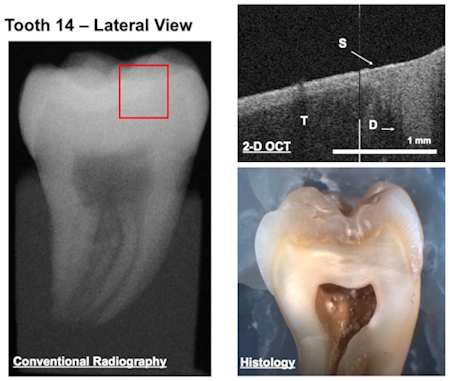But government officials and public advocacy groups believe that cost is not the real issue. They are accusing the ADA and other dental associations of deliberately blocking attempts to regulate the use of amalgam separators.
Testifying before the domestic policy subcommittee of the House Committee on Oversight and Government Reform at a hearing to assess state and local regulations to reduce dental mercury emissions, William J. Walsh, outside counsel for the ADA on amalgam wastewater issues, offered oral and written testimony supporting the ADA's efforts to create "voluntary, cooperative partnerships" to reduce the environmental impact of dental mercury emissions.
He noted that the ADA has issued several best management practices (BMPs) for handling waste amalgam. These BMPs include standard control methods, recycling of collected amalgam, and, since last fall, the use of amalgam separators.
Walsh also argued, however, that dentistry's contribution to surface water mercury is very minor.
"Dentistry contributes less than 1% of the total mercury found in our lakes and streams," Walsh said in a prepared
statement.
Even though 40% to 50% of mercury that enters wastewater comes from dental offices nationwide, wastewater treatment plants catch most it, according to Walsh. Eventually, dental offices contribute only 0.4% of the mercury that goes into surface water, he said in an interview with DrBicuspid.com.
If every dental office nationwide installed an amalgam separator, it would have a minimal impact on this already small number, Walsh added added. Currently only nine states require dental offices to install amalgam separators.
"If you take a standard dental office without an amalgam separator, 99% of mercury is captured by the wastewater treatment plant, while those with a separator get 99.2% of their waste captured," Walsh said. "Eventually, it is almost the same amount. The only difference is that in offices with an amalgam separator, the mercury gets captured before it goes into the sewerage system."
A mandatory amalgam separator program would be an administrative burden and increase the cost of dental care, as well as the cost of regulating dentistry, he said.
The overall cost to a dentist to install an amalgam separator includes buying the separator, installing it, and annual operation and maintenance fees, Walsh explained. The capital cost and installation are approximately $1,200, and the annual cost of owning and operating an amalgam separator is around $770.
A voluntary program is more appropriate for attaining mercury reduction from a professional group like dentists than a "command-and-control" approach, he added.
"The ADA believes that the issue of installation should be decided on a case-by-case basis based on site-specific conditions," Walsh said.
The EPA also favors a voluntary program when it comes to small businesses, he added.
"If it is not effective, the government can always make it mandatory," Walsh toldDrBicuspid.com.
The three subcommittee members at the hearing were not receptive to the ADA's argument.
"I just have to say to the unbiased observers that it seems to me the ADA has a resistance to mandatory separators that is almost theological," said Rep. Dennis Kucinich (D-OH), who chairs the domestic policy subcommittee, according to an ADA news
article. "Are there product liability concerns or a fear of class action in the offing? Is there something deeper here?"
Michael Bender, director of the Mercury Policy Project, a public advocacy group that supports mandatory amalgam separators, testified that separators are the most cost-effective method of controlling mercury pollution from dental offices.
The total cost of installing separators in all general practices across the U.S. would be around $116,999,141, Bender testified. Considering 60,000,000 amalgam fillings are placed each year, the separator cost would only be $1.95 per filling, he argued.
"Cost to remove mercury at a wastewater plant is $21 million per pound, or $46,000 per gram, compared with amalgam separator cost of $1.95 for an average mercury filling removal," he said.
He accused the ADA and state dental associations of blocking amalgam separator initiatives.
"The California Dental Association was the sole opponent of Assembly Bill 966 in 2005, authored by Assembly Member Lori Saldaña, and stopped the bill in the Assembly. The bill would have mandated separators," according to a
report presented by the Mercury Policy Project at last week's congressional hearing. "Last year, the Pennsylvania Dental Association blocked a proposed ordinance by the Philadelphia City Council would have required most dentists residing in Philadelphia to install amalgam separators."
Asbjorn Jokstad, D.D.S., Ph.D., head of the department of prosthodontics at the University of Toronto, agrees that amalgam separators should be mandatory.
They are the only effective way of minimizing mercury release in the water supply as they capture the small particles, he stated in an e-mail to DrBicuspid.com. With other measures, larger amalgam particles are caught and their weight gets included in the overall percentage of mercury released into the environment, he explained.
"Although these larger particles are also of some environmental concern, they are of less worry since they will not undergo the mercury methylation process that occurs in aquatic milieu," he concluded.
"The record clearly shows that voluntary programs are not effective at convincing dentists to install amalgam separators," Bender stated in his testimony before Congress. "To prevent future pollution and costs, separators should be required and amalgam phased out."

 Slim, elegant design for easier intraoral access, fast photorealistic color imaging, and powderless convenience make the new CEREC Omnicam the most precise, easy-to-use CAD/CAM
Slim, elegant design for easier intraoral access, fast photorealistic color imaging, and powderless convenience make the new CEREC Omnicam the most precise, easy-to-use CAD/CAM

